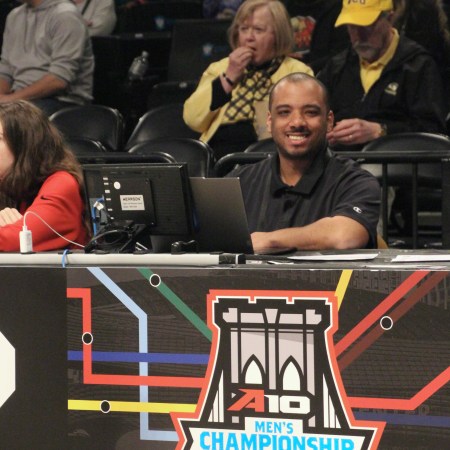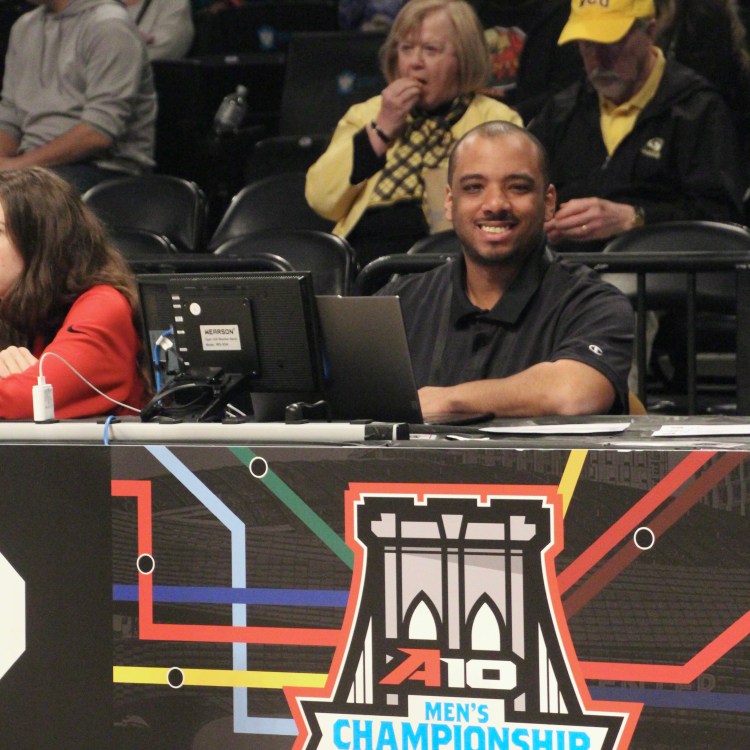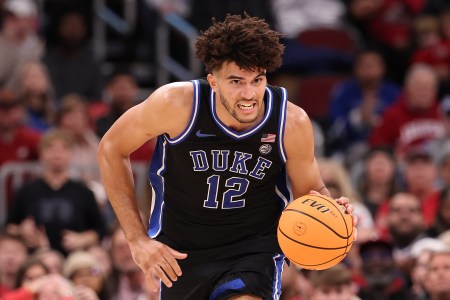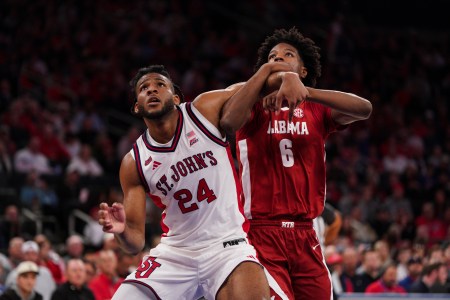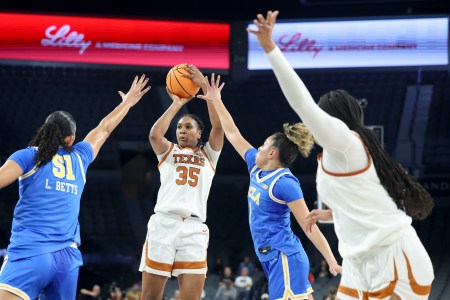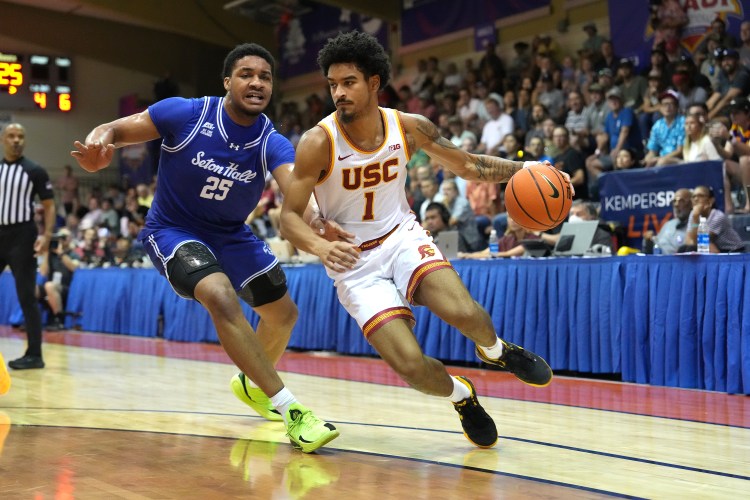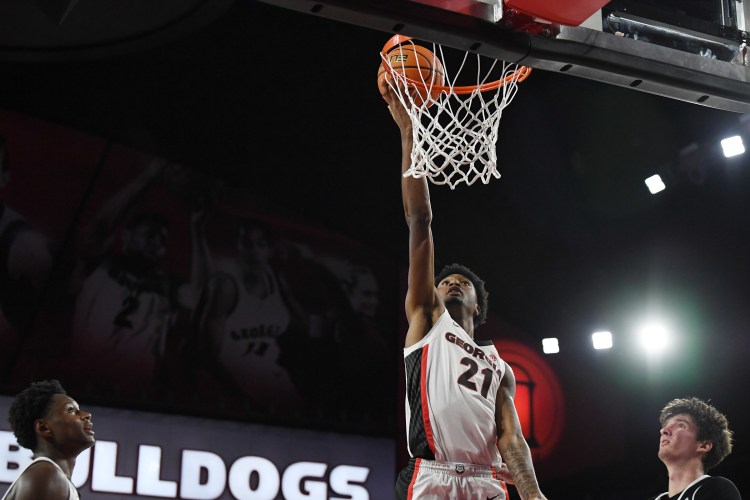The transfer portal opened March 24, and hundreds of players, including conference Player of the Year winners and All-Americans, picked new teams before it closed April 22.
While quality players remain available, some programs already have rebuilt their rosters and should be viewed as portal “winners.”
Here’s an updated look at the 25 teams that have done the best in the transfer portal.
1. Kentucky (Previous ranking: 1)
Newcomers: Jaland Lowe, 6-foot-2 sophomore guard, Pitt; Kam Williams, 6-foot-8 freshman forward, Tulane; Mouhamed Dioubate, 6-foot-7 sophomore forward, Alabama; Jayden Quaintance, 6-foot-9 freshman forward, Arizona State; Denzel Aberdeen, 6-foot-5 junior guard, Florida
Kentucky’s portal group is a nice mix of proven players and those with a high upside. Lowe led Pitt in scoring at 16.8 points and in assists at 5.5 per game. Aberdeen, the most recent pickup, played a key role off the bench for the national-champion Gators. Williams shot 39.7 percent from three-point range as a freshman starter at Tulane, while Dioubate is a proven SEC contributor and high-level athlete.
The ultimate X-factor is Quaintance. He was the youngest player in all of college basketball – he won’t turn 18 until July 11 – and played well on both ends, ranking third in the Big 12 with 63 blocks. He reportedly is recovering from ACL surgery and is expected to return before the season. If he’s healthy and effective, that could give Kentucky the edge in the SEC – and nationally.
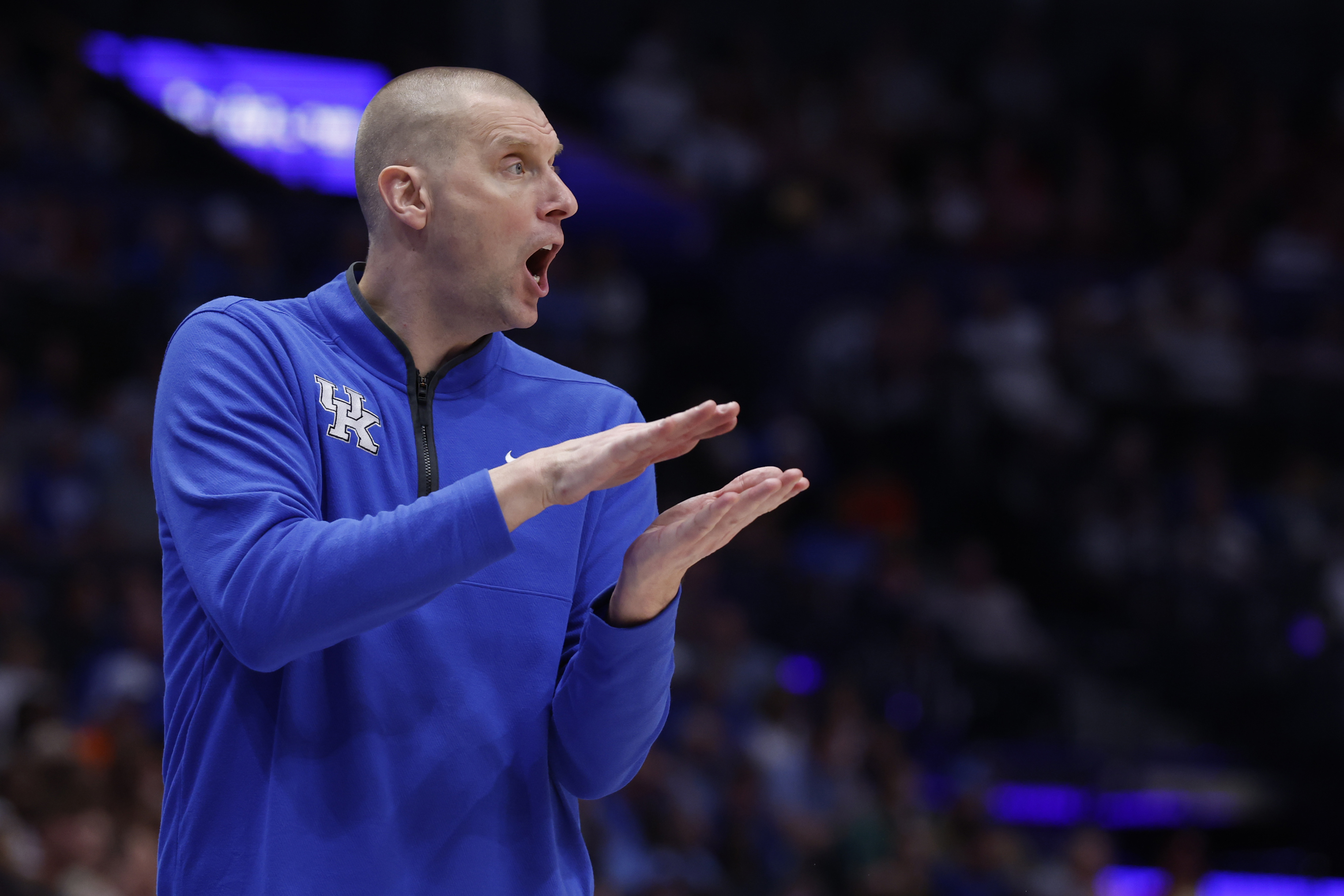
2. St. John’s (Previous ranking: 2)
Newcomers: Joson Sanon, 6-foot-5 freshman guard, Arizona State; Bryce Hopkins, 6-foot-6 senior forward, Providence; Oziyah Sellers, 6-foot-5 junior guard, USC; Dylan Darling, 6-foot-2 sophomore guard, Idaho State; Dillon Mitchell, 6-foot-8 junior forward, Cincinnati; Ian Jackson, 6-foot-4 freshman guard, North Carolina
Hopkins has dealt with injuries for the past two seasons, but when healthy, he is an All-Big East performer. Sanon averaged 11.9 points per game, but that increased to nearly 20 in the final five games of the season; he will be a national breakout candidate in 2025-26. Adding 40 percent three-point shooter Sellers to the backcourt is a major boost to a team that poorly from beyond the arc. The key will be whether Jackson and/or Darling can handle the ballhandling duties for the Red Storm. That’ll determine the overall ceiling for the team.
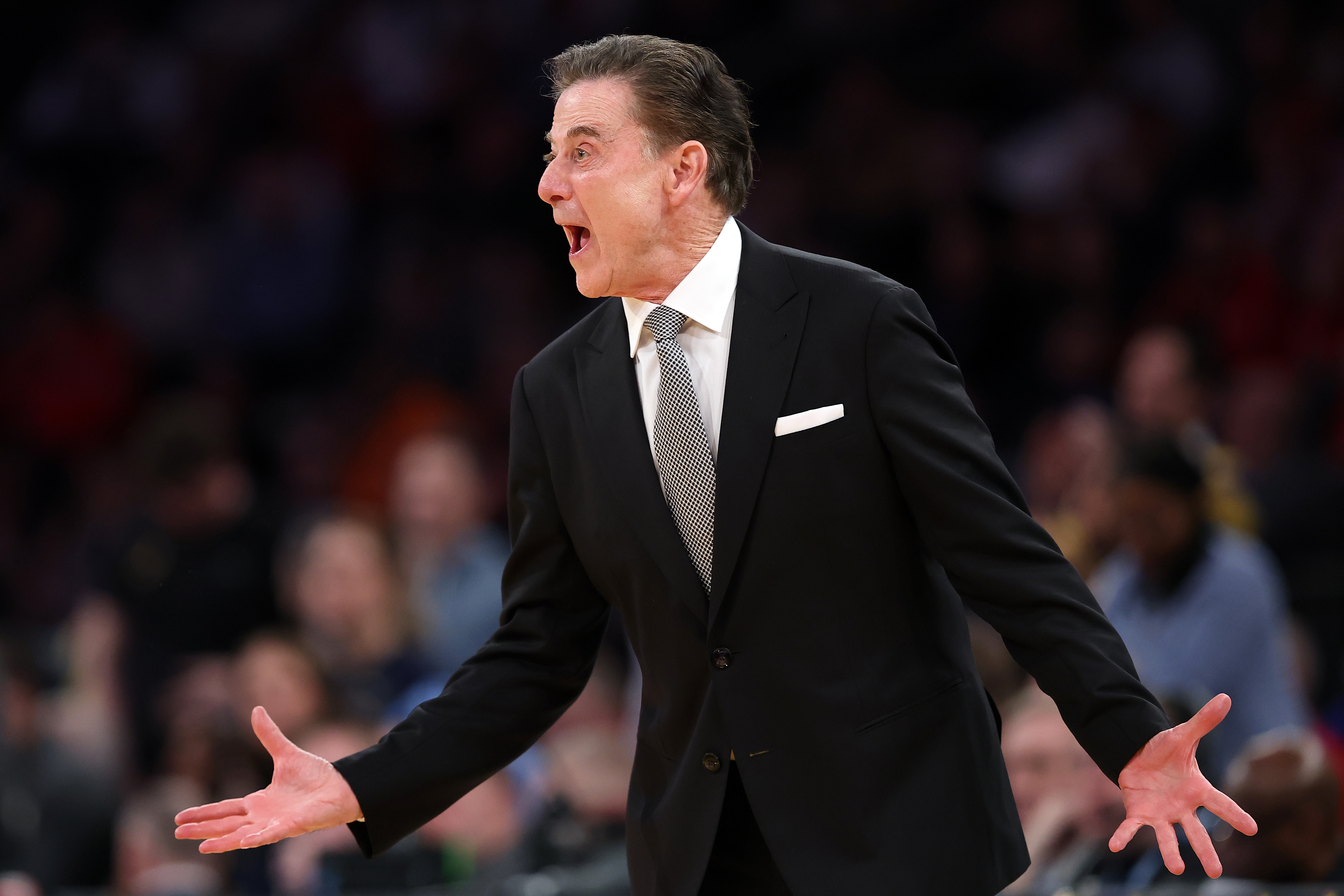
3. Indiana (Previous ranking: 3)
Newcomers: Tucker DeVries, 6-foot-7 senior forward, West Virginia; Conor Enright, 6-foot junior guard, DePaul; Reed Bailey, 6-foot-11 junior forward, Davidson; Lamar Wilkerson, 6-foot-4 senior guard, Sam Houston State; Tayton Conerway, 6-foot-3 senior guard, Troy; Jasai Miles, 6-foot-6 sophomore wing, North Florida; Sam Alexis, 6-foot-8 junior forward, Florida; Nick Dorn, 6-foot-7 sophomore guard, Elon; Josh Harris, 6-foot-8 sophomore forward, North Florida
It wasn’t just his son, a two-time former Missouri Valley Player of the Year, that new coach Darian DeVries has landed. The Hoosiers have signed a potent scoring bunch. Bailey and Wilkerson are two of the top scorers from the portal, while Alexis gives IU needed frontcourt depth. If players such as Dorn and Miles can be solid Big Ten rotation players, it’s a roster that’s becoming a league contender.
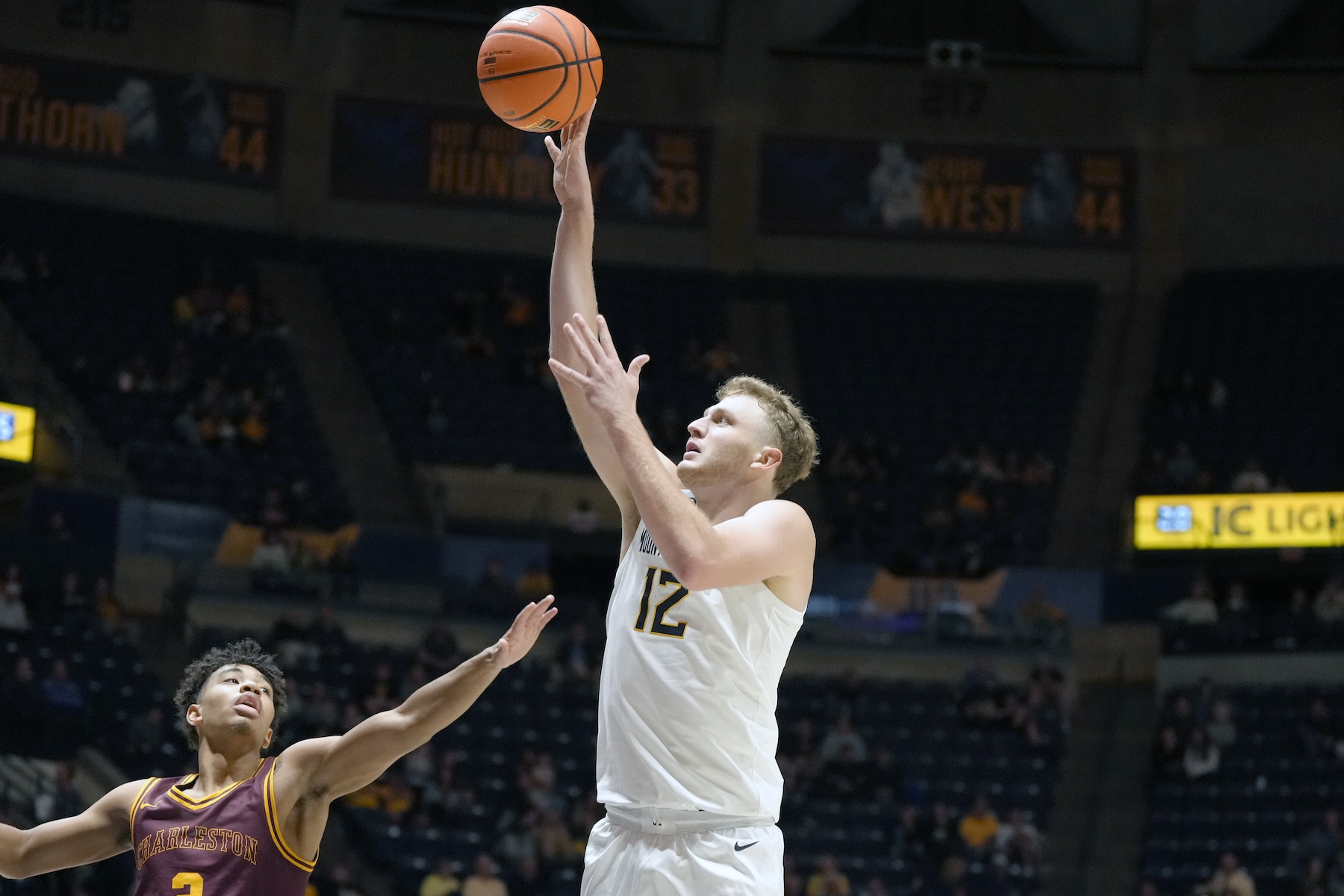
4. Michigan (Previous ranking: 4)
Newcomers: Elliot Cadeau, 6-foot-1 sophomore guard, North Carolina; Morez Johnson Jr., 6-foot-9 freshman forward, Illinois; Aday Mara, 7-foot-3 sophomore center, UCLA; Yaxel Lendeborg, 6-foot-9 senior forward, UAB
Michigan had one of the top frontcourts in the country this season; depending on pending NBA draft decisions, it could have an even better one next season. Lendeborg is a former AAC Player of the Year and multitime defensive player of the year. He averaged 17.7 points and 11.4 rebounds with the Blazers this season. Mara was inconsistent in his two seasons at UCLA but was playing his best basketball toward the end of this season, including four double-digit games. Add Cadeau, one of the best pure passers in college basketball, and the Wolverines’ offense should be one of the best next season. Look for coach Dusty May to try to add one more perimeter weapon.
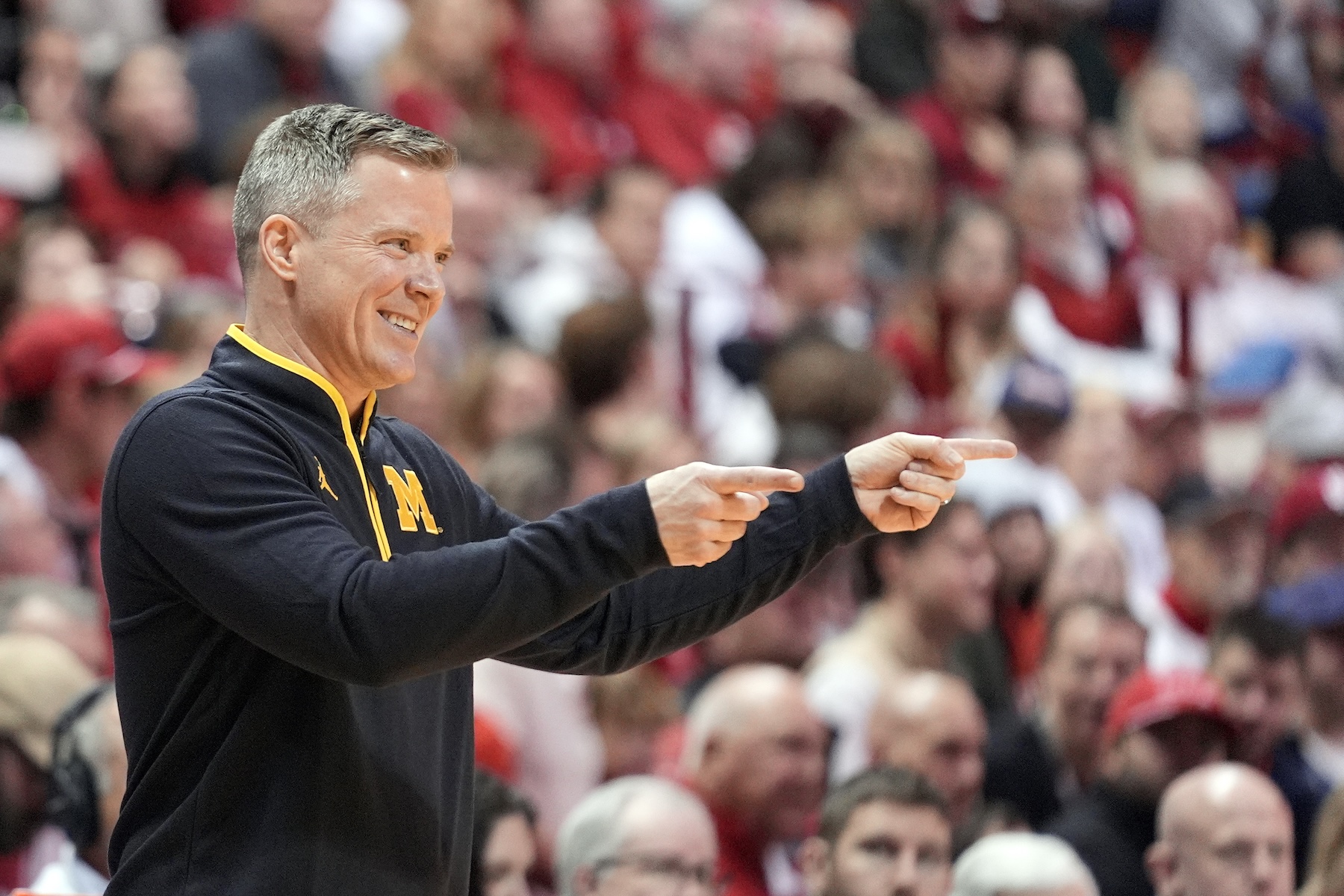
5. Iowa (Previous ranking: 5)
Newcomers: Bennett Stirtz, 6-foot-4 junior guard, Drake; Kael Combs, 6-foot-4 sophomore guard, Drake; Isaia Howard, 6-foot-5 freshman guard, Drake; Tavion Banks, 6-foot-7 junior forward, Drake; Cam Manyawu, 6-foot-9 sophomore forward, Drake; Brendan Hausen, 6-foot-4 junior guard, Kansas State; Alvaro Folguerias, 6-foot-9 sophomore forward, Robert Morris
So far, the only transfers coach Ben McCollum has landed were with him at Drake. But when one of those is the MVC Player of the Year – Stirtz, who averaged 19.2 points and 5.7 assists in his first season at the Division I level – that’s perfectly acceptable for a first transfer class. Landing Folguerias, the Horizon League Player of the Year this past season, is a nice pickup, as his scoring and playmaking abilities should fit the system well. The recent addition of Hausen is key, as he’s the one proven high-major talent among the transfers.
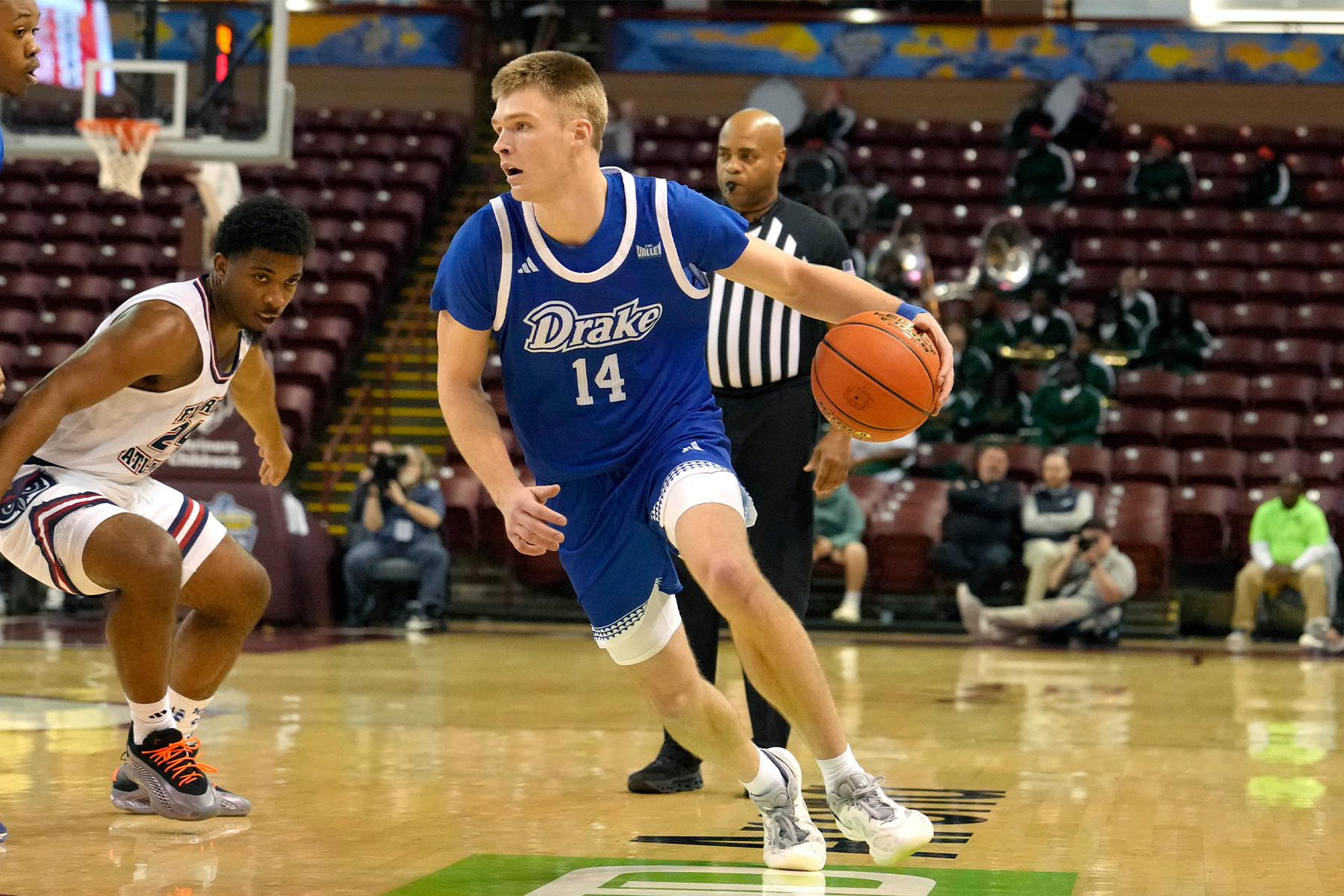
6. Creighton (Previous ranking: 6)
Newcomers: Josh Dix, 6-foot-5 junior guard, Iowa; Nik Graves, 6-foot-3 junior guard, Charlotte; Owen Freeman, 6-foot-10 sophomore forward, Iowa; Austin Swartz, 6-foot-4 freshman guard, Miami; Blake Harper, 6-foot-8 sophomore forward, Howard
Although Iowa finished just a game over .500 this season, it still had one of the best offenses in the nation. Creighton landed two key pieces in Freeman and Dix, who combined to produce more than 31 points and 10 rebounds a game. And don’t overlook Graves, who led Charlotte at 17.5 points per game this season, as another likely starter. The Bluejays seem likely to add one more frontcourt piece. On paper, they will have another elite offensive unit.
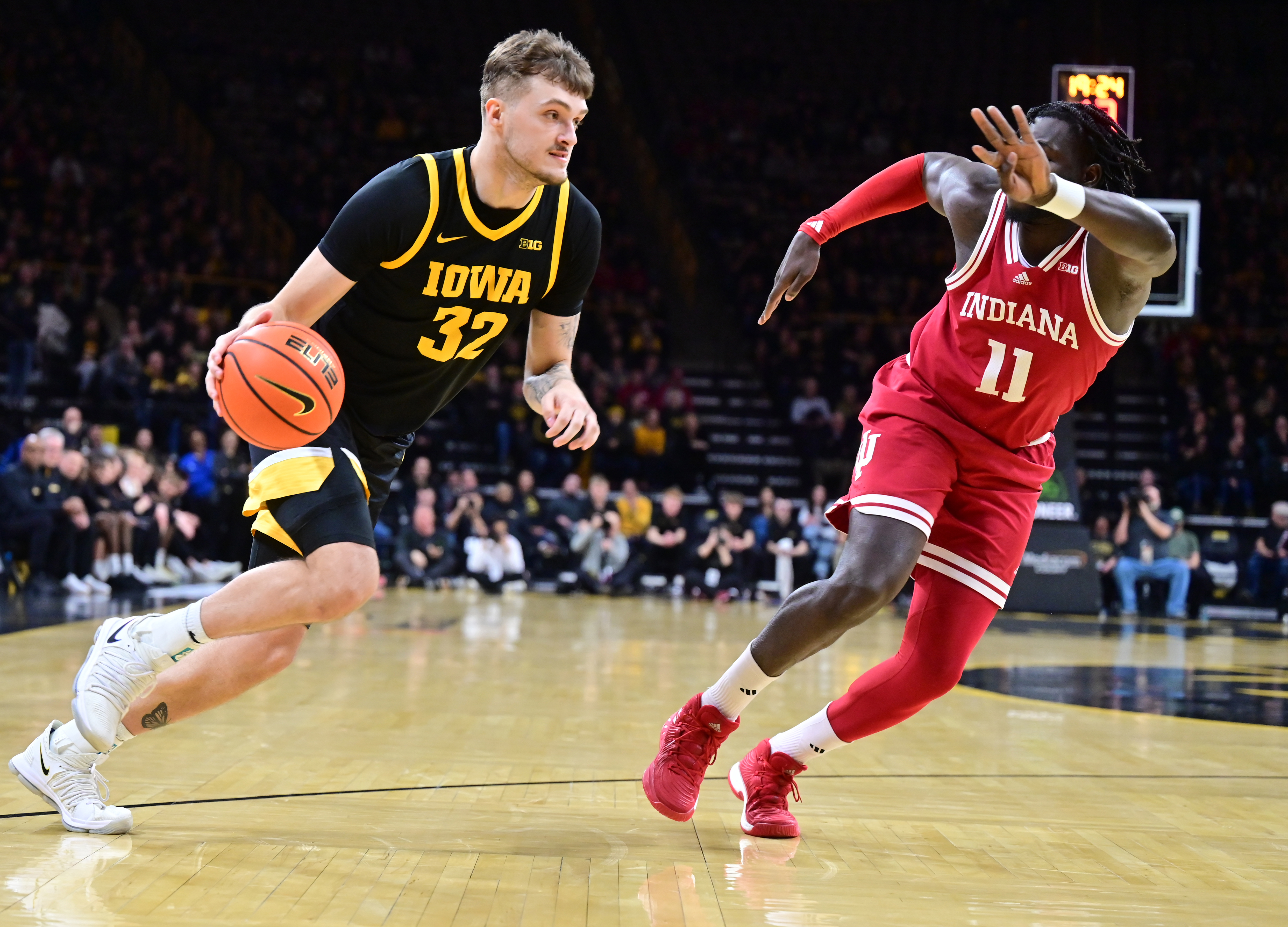
7. Louisville (previous ranking: 7)
Newcomers: Ryan Conwell, 6-foot-4 junior guard, Xavier; Isaac McKneely, 6-foot-4 junior guard, Virginia; Adrian Wooley, 6-foot-5 freshman guard, Kennesaw State
Landing one leading scorer from a high-major team is a good sign for one’s transfer class. Coach Pat Kelsey got two, including keeping Conwell (16.5 points per game) from following Sean Miller to Texas. Conwell and McKneely each shot better than 41 percent from three-point range and will be starters for the Cardinals, while Wooley, who averaged 18.8 points as a freshman at Kennesaw, is a high-ceiling player who also can shoot at a high level (42.2 percent from beyond the arc). Look for Louisville to target a center and a ballhandler to round out the roster.
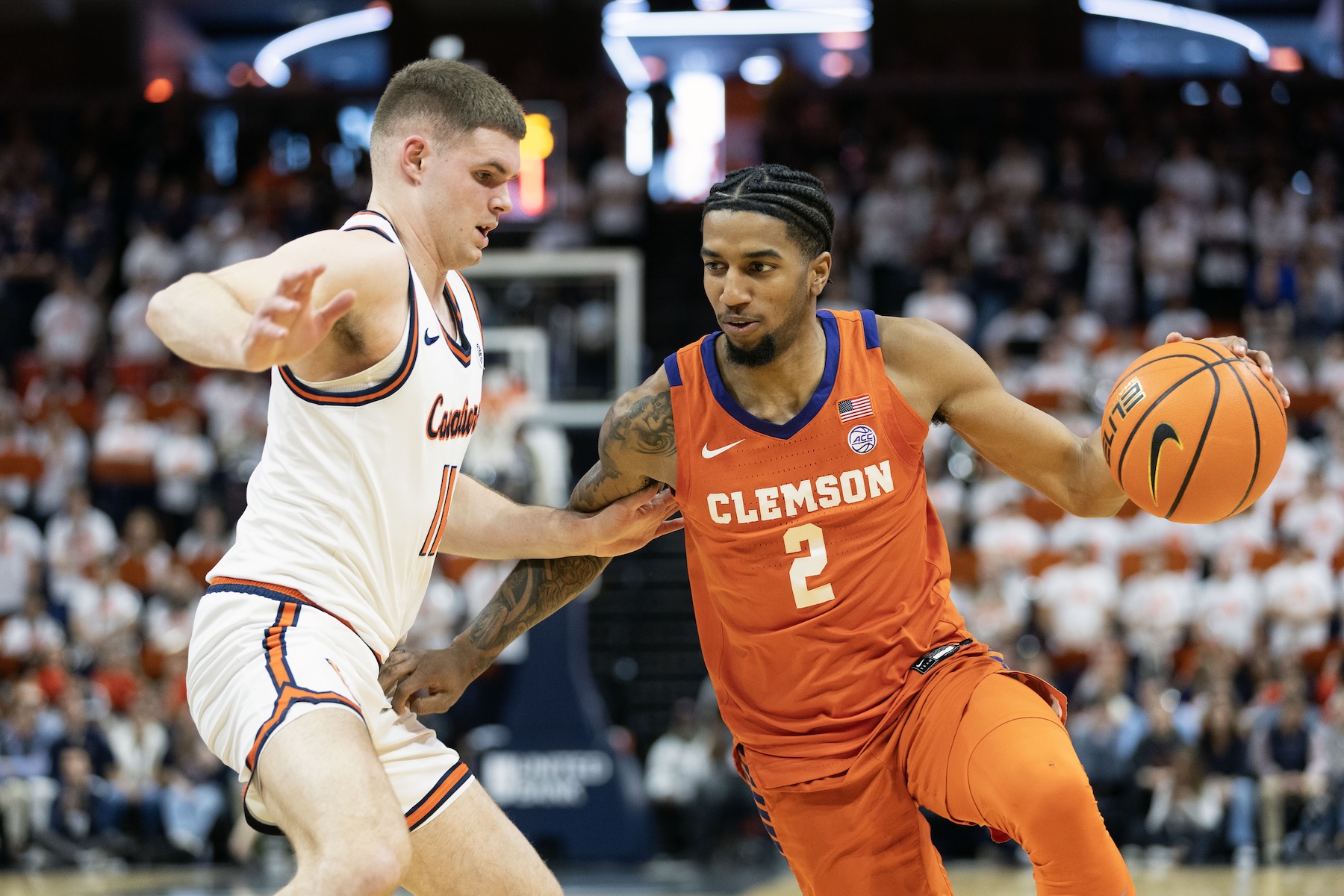
8. Washington (Previous ranking: 11)
Newcomers: Quimari Peterson, 6-foot-1 senior guard, East Tennessee State; Wesley Yates III, 6-foot-4 freshman guard, USC; Mady Traore, 6-foot-11 sophomore center, Maryland; Lathan Sommerville, 6-foot-10 center, Rutgers; Jacob Ognacevic, 6-foot-8 senior forward, Lipscomb; Bryson Tucker, 6-foot-6 guard, Indiana; Christian Nitu, 6-foot-11 sophomore forward, Florida State; Desmond Claude, 6-foot-5 senior guard, USC
The Huskies’ transfer class fell flat this past season, with the team finishing last in the Big Ten. They’re trying again, and on paper, this is an impressive haul. Arguably, their top two pickups are Claude and Yates, who arrive from fellow Big Ten program USC; each averaged more than 14 points per game this past season and is a proven high-major contributor. Ognacevic averaged 20.0 points and 8.0 rebounds at Lipscomb, earning ASUN Player of the Year honors. And Peterson was the Southern Conference POY for ETSU after averaging 19.5 points and shooting 42.2 percent from three-point range. It looks to be one of the most accomplished transfer groups and one that can get the Huskies out of the bottom half of the Big Ten.
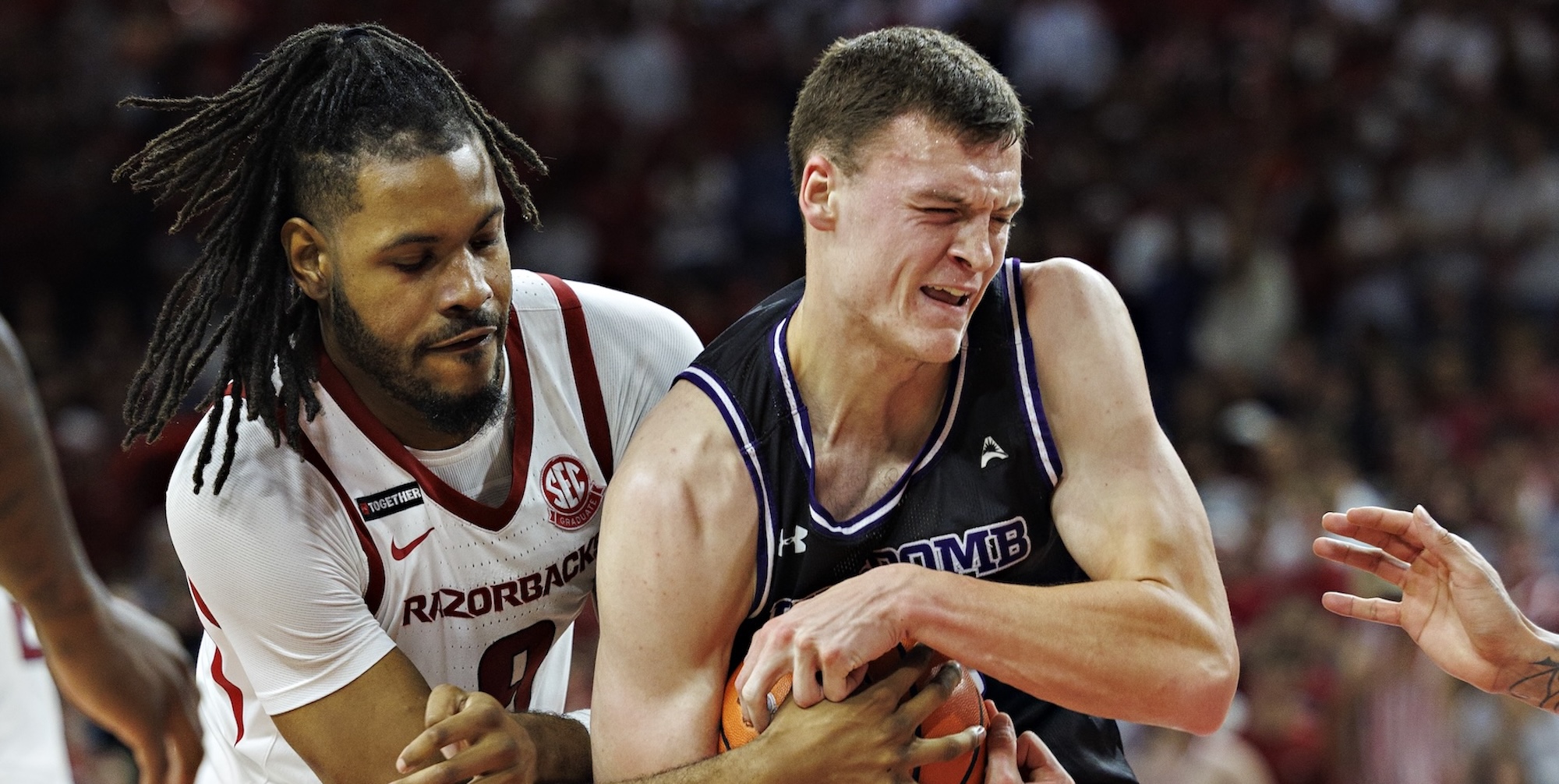
9. USC (Previous ranking: 10)
Newcomers: Jaden Brownell, 6-foot-9 junior forward, Samford; Jacob Cofie, 6-foot-10 freshman forward, Virginia; Amarion Dickerson, 6-foot-7 junior forward, Robert Morris; Gabe Dynes, 7-foot-3 sophomore center, Youngstown State; Ezra Ausar, 6-foot-9 junior forward, Utah; Rodney Rice, 6-foot-4 sophomore guard, Maryland; Chad Baker-Mazara, 6-foot-7 senior forward, Auburn; Jordan Marsh, 5-foot-10 junior guard, UNC Asheville; Kezza Giffa, 6-foot-2 senior guard, High Point; Ryan Cornish, 6-foot-3 senior guard, Dartmouth
Coach Eric Musselman has been one of the busiest in the portal thus far, rebuilding his entire frontcourt. The Horizon League duo of Dickerson and Dynes are two of the top shot-blockers in the nation, while Brownell and Jones are veteran scorers. Cofie had some good moments as a freshman at Virginia and could be a breakout candidate. Although the Trojans lost starting guard Desmond Claude to the portal, the hope is that the duo of Rice and Marsh (who averaged 18.8 points and 3.7 assists in the Big South) could be a possible upgrade running the offense.
10. Texas A&M (Previous ranking: 8)
Newcomers: Jacari Lane, 6-foot junior guard, North Alabama; Josh Holloway, 6-foot-2 sophomore guard, Samford; Zach Clemence, 6-foot-10 junior forward, Kansas; Mackenzie Mgbako, 6-foot-8 sophomore forward, Indiana; Rylan Griffen, 6-foot-5 senior guard, Kansas; Federiko Federiko, 6-foot-11 senior center, Texas Tech; Jamie Vinson, 6-foot-11 sophomore forward, Texas; Marcus Hill, 6-foot-4 senior guard, NC State; Pop Isaacs, 6-foot-2 junior guard, Creighton; Rashaun Agee, 6-foot-7 senior forward, USC
New coach Bucky McMillan landed a pair of former top-40 prospects in Griffen and Mgbako, both of whom are proven double-digit scorers at the high-major level. The most important pickup came late; Isaacs averaged 16 points per game in eight games before a season-ending hip injury. With him as the lead guard, the new version of “Bucky Ball” could be the best yet.
11. Baylor (Previous ranking: 9)
Newcomers: JJ White, 6-foot-2 junior guard, Omaha; Obi Agbim, 6-foot-3 junior guard, Wyoming; Michael Rataj, 6-foot-9 junior forward, Oregon State; Juslin Bodo Bodo, 7-foot sophomore forward, High Point; Daniel Skillings Jr., 6-foot-6 junior forward, Cincinnati; Caden Powell, 6-foot-10 junior forward, Rice
After losing a lot of production, Baylor needed to add guys that could fill up the stat sheet. White was the lead guard on a potent Omaha squad, averaging 13.7 points and 4.0 assists per game. Agbim was one of the best junior college transfers this season, leading the Cowboys at 17.6 points per game. Rataj is set to replace 6-foot-7 forward Norchad Omier inside and gives Baylor size and a capable post threat on offense, while Bodo Bodo was a two-time Big South Defensive Player of the Year at High Point. Multiple guards still are needed, including those with high-major experience.
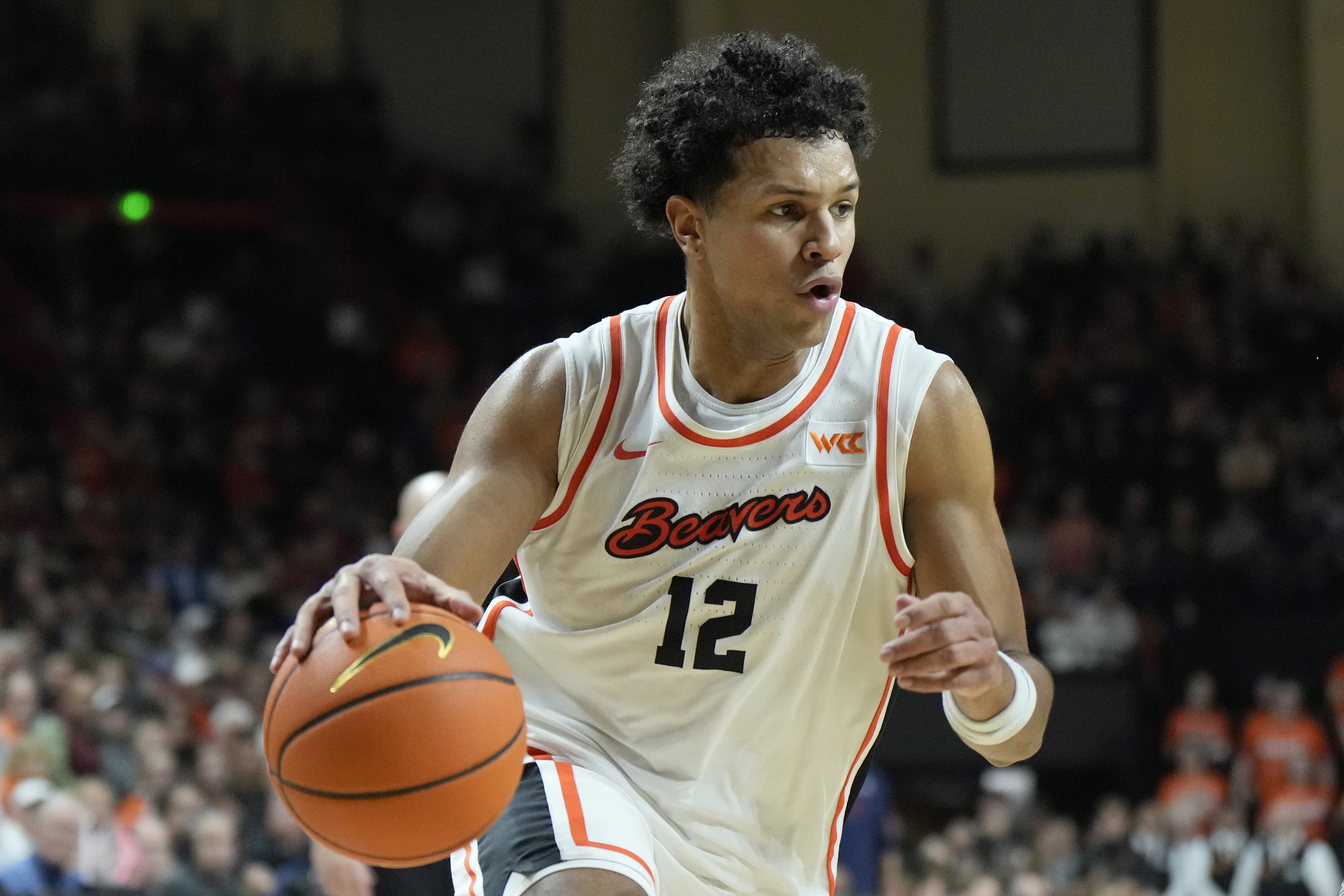
12. Auburn (previous ranking: 12)
Newcomers: KeShawn Murphy, 6-foot-10 junior forward, Mississippi State; Kevin Overton, 6-foot-5 sophomore guard, Texas Tech; Keyshawn Hall, 6-foot-7 junior forward, UCF; Abdul Bashir, 6-foot-7 junior guard, Casper (Wyo.) CC; Emeka Opurum, 7-foot freshman center, Butler (Kan.) CC; Elyjah Freeman, 6-foot-8 junior forward, Division II Lincoln Memorial University
Coach Bruce Pearl has used several different avenues to find good talent, landing one of the best D2 players (Freeman) and the best junior college transfer (Bashir) to rebuild the frontcourt. The proven high-major star is Hall, who led UCF this past season with 18.8 points and 7.1 rebounds per game. As long as 6-foot-1 freshman guard Tahaad Pettiford returns, the Tigers won’t need to add another ballhandler.
13. NC State (previous ranking: N/A)
Newcomers: Alyn Breed, 6-foot-3 senior guard, McNeese State; Quadir Copeland, 6-foot-6 senior guard, McNeese State; Tre Holloman, 6-foot-2 senior guard, Michigan State; Terrance Arceneaux, 6-foot-5 senior guard, Houston; Jerry Deng, 6-foot-9 junior forward, Florida State; Colt Langdon, 6-foot-7 freshman forward, Butler; Darrion Williams, 6-foot-6 senior forward, Texas Tech; Ven-Allen Lubin, 6-foot-8 senior forward, North Carolina
New coach Will Wade has loaded up the roster, headlined by versatile forward Williams. He’ll anchor the frontcourt core, joined by another key late addition in former Tar Heel Lubin. The X-factor here is Arceneaux, who could be primed for a breakout campaign after being part of a loaded backcourt at Houston.
14. Maryland (previous ranking: 15)
Newcomers: David Coit, 5-foot-11 senior guard, Kansas; Myles Rice, 6-foot-2 sophomore guard, Indiana; Isaiah Watts, 6-foot-3 sophomore guard, Washington State; Solomon Washington, 6-foot-7 junior forward, Texas A&M; Elijah Saunders, 6-foot-8 junior forward, Virginia; Pharrel Payne, 6-foot-9 junior forward, Texas A&M; Collin Metcalf, 6-foot-9 senior center, Northeastern; Rakease Passmore, 6-foot-5 sophomore forward, Kansas
New coach Buzz Williams had one of the nation’s most physical frontcourts at Texas A&M this season. Bringing Payne and Washington with him from the Aggies and adding Saunders will ensure that facet of his team remains in place in the Big Ten. The key is how the backcourt works out, as Coit and Rice saw their stats decrease from previous seasons. Rice still averaged 10.1 points per game as the starting guard for the Hoosiers. The addition of another shooter is next on the agenda.
15. UCLA (previous ranking: 11)
Newcomers: Donovan Dent, 6-foot-2 junior guard, New Mexico; Jamar Brown, 6-foot-5 senior guard, Kansas City; Xavier Booker, 6-foot-11 sophomore forward, Michigan State
It’s not the biggest transfer class UCLA has had, but it’s led by arguably the best player who entered the portal in Dent. He averaged 20.4 points and 6.4 assists, earning Mountain West Player of the Year honors. Dent, an L.A. native, gives the Bruins a clear lead guard who can give them 20 on any night. Booker, a former five-star prospect, replaces Aday Mara as the high-potential big man in the group. Barring any other departures, the Bruins may look for another veteran guard but are in a strong position for next season.
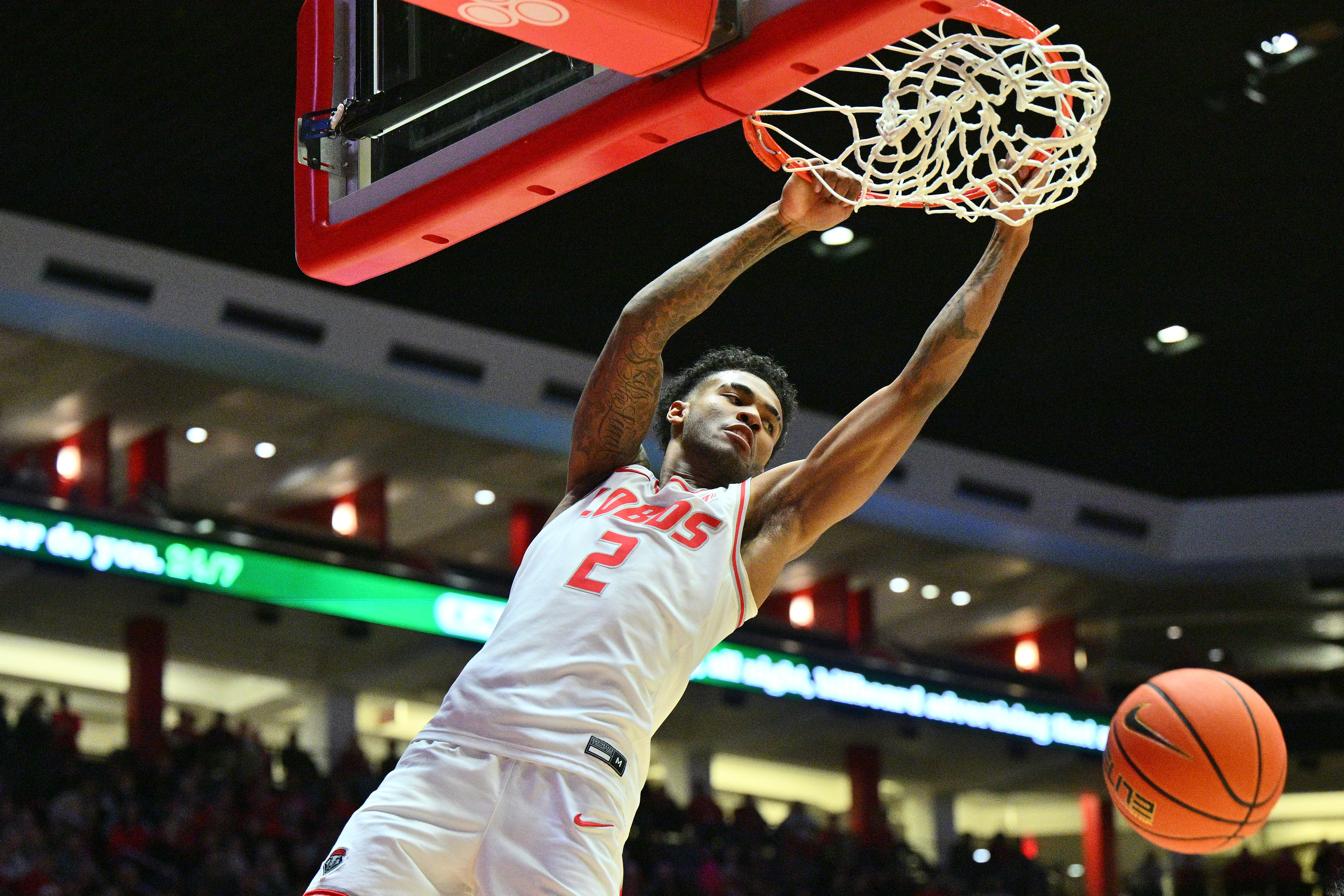
16. Alabama (Previous ranking: 14)
Newcomers: Jalil Bethea, 6-foot-5 freshman guard, Miami; Taylor Bol Bowen, 6-foot-10 sophomore forward, Florida State; Noah Williamson, 7-foot junior center, Bucknell; Keitenn Bristow, 6-foot-8 sophomore forward, Tarlteton State
The Tide lost a ton of talent but landed some pieces who should make immediate impacts. Williamson led Bucknell at 17.6 points per game en route to earning Patriot League Player of the Year honors, while Bol Bowen is an athletic stretch forward who should thrive in coach Nate Oats’ offense. Bethea, a former five-star prospect coming off a disappointing first season at Miami, is the ultimate lottery ticket for the team. If he breaks out, Alabama will be back as a national contender.
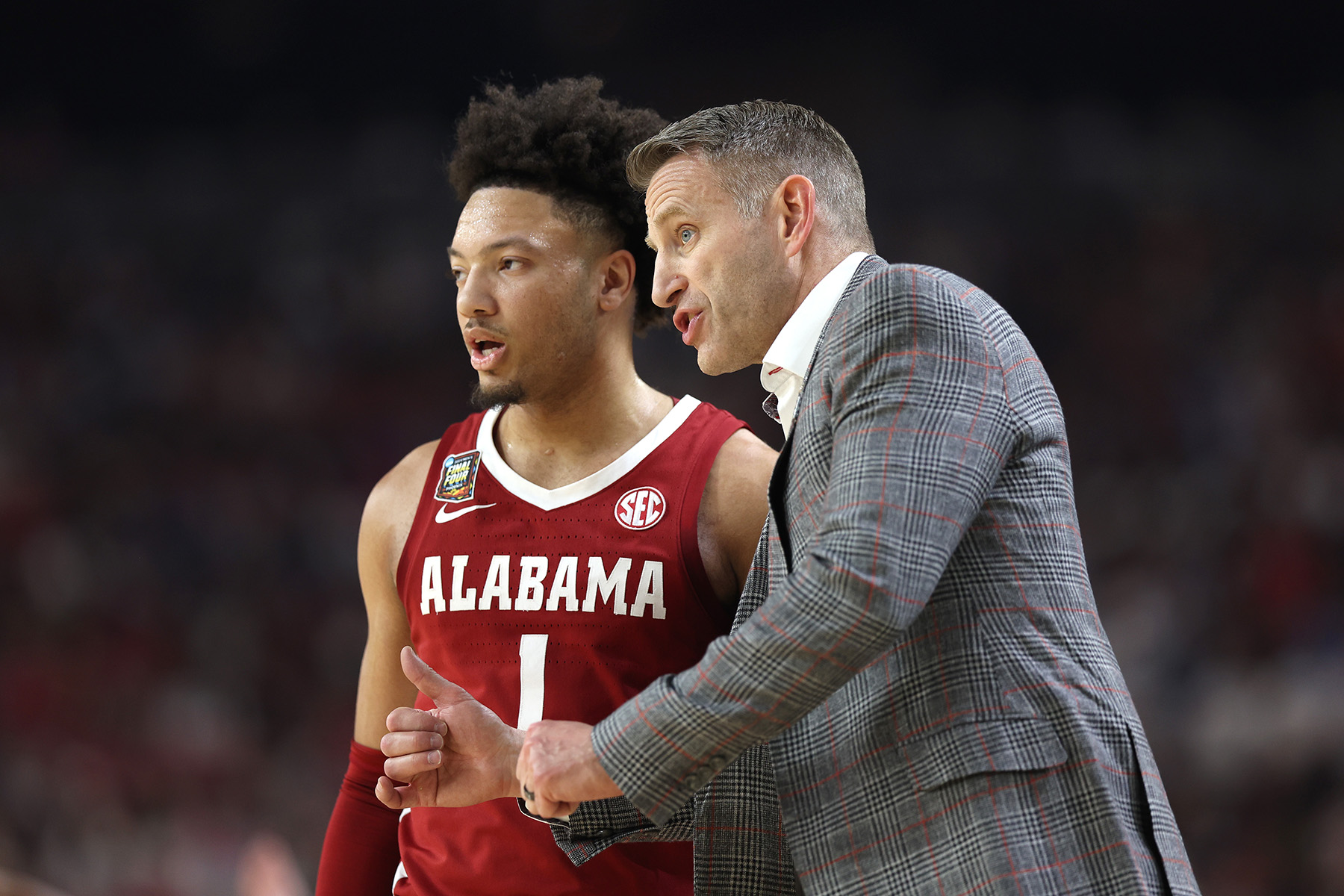
17. LSU (previous ranking: 13)
Newcomers: Dedan Thomas Jr., 6-foot-1 freshman guard, UNLV; Max Mackinnon, 6-foot-5 junior guard, Portland; Rashad King, 6-foot-6 guard, Northeastern; Marquel Sutton, 6-foot-7 senior forward, Omaha; Michael Nwoko, 6-foot-10 sophomore center, Mississippi State; PJ Carter, 6-foot-5 senior guard, Memphis; Pablo Tamba, 6-foot-6 senior guard, UC Davis
The only newcomer in this group with high-major experience is Nwoko, who started 32 games at Mississippi State and will be the Tigers’ starting center. But the others were the top scorers on their old teams. Thomas, who averaged 15.6 points per game at UNLV, can get on the national radar now that he’s in the SEC. Sutton and King each put up more than 18.5 points per game this season and were all-league players. The Tigers probably will add more depth to this core.
18. Florida (Previous ranking: N/A)
Newcomers: Xaivian Lee, 6-foot-3 senior guard, Princeton; AJ Brown, 6-foot-4 junior guard, Ohio; Boogie Fland, 6-foot-2 sophomore guard, Arkansas
The Gators had to replace their entire backcourt rotation from the national title squad and did a fairly good job at it. Fland, a former five-star prospect, will be a sophomore breakout candidate to watch as the lead guard, while Lee has been one of the best mid-major players in the country for the past two seasons. Don’t overlook Brown, either, as he shot almost 40 percent from three-point range at nearly five attempts a game.
19. North Carolina (Previous ranking: 16)
Newcomers: Kyan Evans, 6-foot-2 sophomore guard, Colorado State; Jonathan Powell, 6-foot-6 freshman forward, West Virginia; Henri Veesaar, 7-foot sophomore forward, Arizona; Jarin Stevenson, 6-foot-11 sophomore forward, Alabama
The biggest weakness for the Tar Heels this past season was a lack of frontcourt depth and production. The hope is that Veesaar and former top-50 prospect Stevenson will help solve that. One major question is whether Evans, who produced 10.6 points per game on nearly 45% shooting from three-point range, is an upgrade over former starter Elliot Cadeau, who left for Michigan.
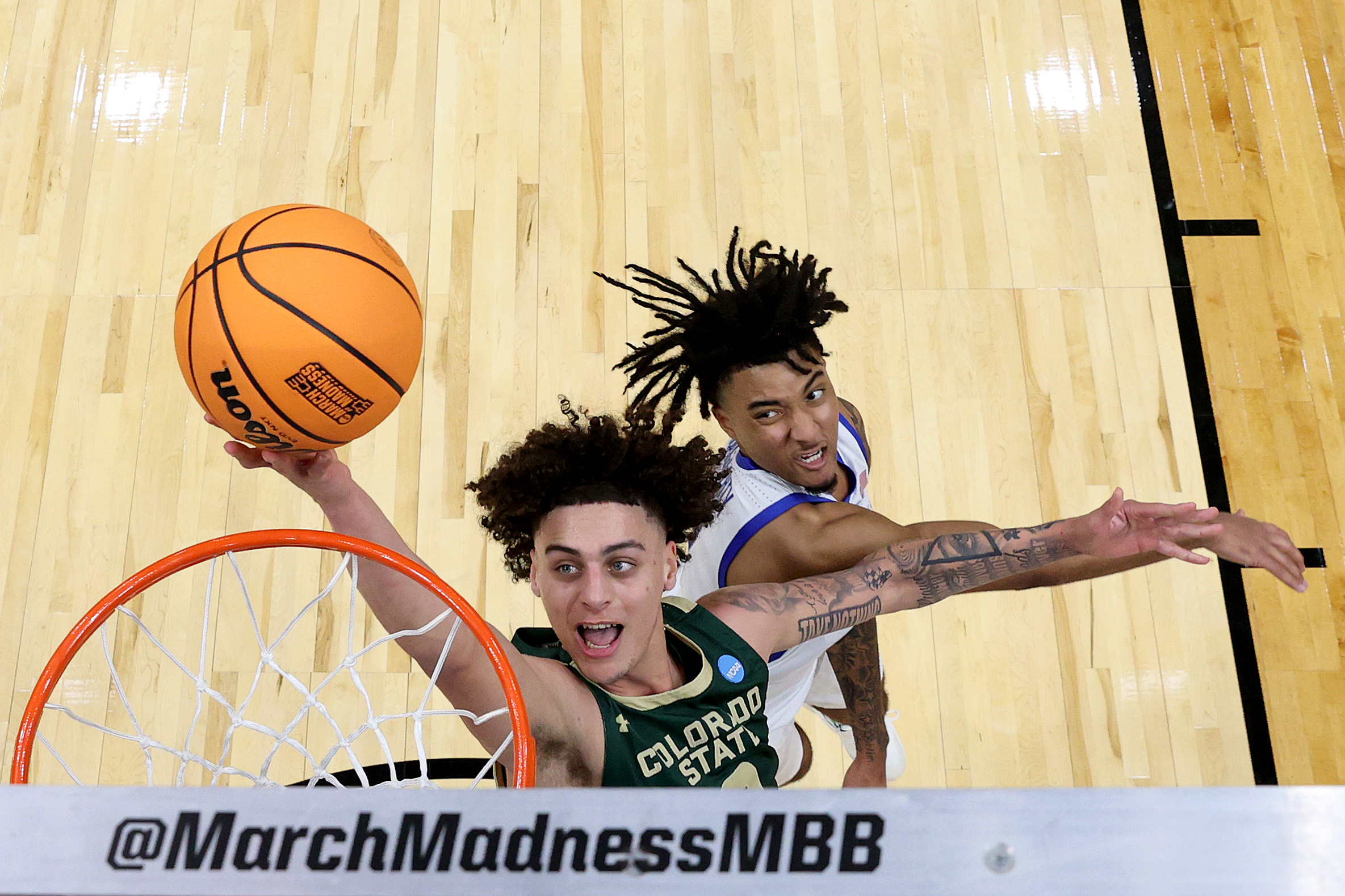
20. Virginia (Previous ranking: 20)
Newcomers: Dallin Hall, 6-foot-4 junior guard, BYU; Jacari White, 6-foot-3 senior guard, North Dakota State; Sam Lewis, 6-foot-6 sophomore guard, Toledo; Devin Tillis, 6-foot-6 senior guard, UC Irvine; Ugonna Onyenson, 6-foot-11 junor center, Kansas State; Malik Thomas, 6-foot-4 senior guard, San Francisco
New coach Ryan Odom was known for teams with stellar guard play at VCU. That reputation has helped him land several backcourt transfers. White and Lewis averaged more than 15 points each at their previous spots, while Hall is a veteran ballhandler who started 61 games in three seasons at BYU. UVa got a recent boost with Thomas, who averaged 19.9 points per game in the WCC and recently was granted a waiver for a fifth year (he played just 18 minutes as a freshman at USC in 2021-22), giving the Cavaliers another scoring threat.
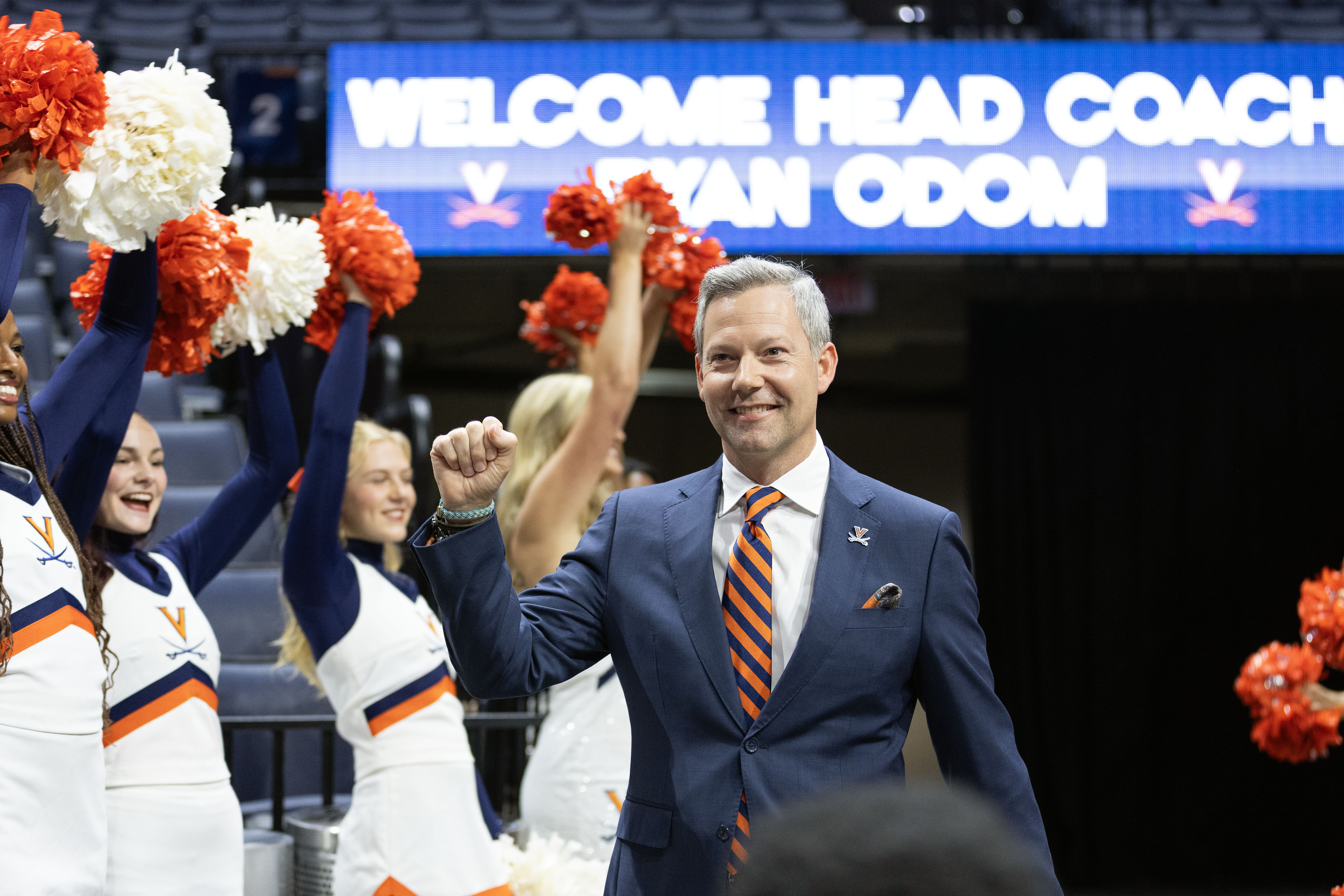
21. Kansas State (Previous ranking: N/A)
Newcomers: Nate Johnson, 6-foot-3 senior guard, Akron; Abdi Bashir Jr., 6-foot-7 junior guard, Monmouth; Marcus Johnson, 6-foot-7 senior forward, Bowling Green; Khamari McGriff, 6-foot-8 senior forward, UNC Wilmington; Tyreek Smith, 6-foot-7 senior forward, Memphis; PJ Haggerty, 6-foot-3 junior guard, Memphis
Coach Jerome Tang had a quality transfer class a year ago after landing some late big names in late May/June. He’s done the same this time around, landing All-American guard Haggerty, one of the best players in the country. Bashir is a 20-points per game scorer from the CAA, while Nate Johnson, a former MAC player of the year at Akron, is set to pair with Haggerty to form a formidable backcourt in the Big 12.
22. Wisconsin (Previous ranking: 19)
Newcomers: Nick Boyd, 6-foot-3 senior guard, San Diego State; Andrew Rohde, 6-foot-6 junior guard, Virginia; Austin Rapp, 6-foot-10 freshman forward, Portland; Braeden Carrington, 6-foot-4 senior guard, Tulsa
Replacing 6-foot-5 All-American senior guard John Tonje won’t be easy for the Badgers, but Boyd, who led San Diego State at 13.4 points per game, is a good start. Rohde averaged 9.3 points per game at Virginia and can run the point, while Rapp, an Aussie, was the WCC Rookie of the Year at Portland this season, averaging 13.8 points and 6.5 rebounds. Another frontcourt addition would be ideal, as the backcourt looks set.
23. Syracuse (Previous ranking: 20)
Newcomers: Nait George, 6-foot-3 sophomore guard, Georgia Tech; Nate Kingz, 6-foot-5 senior guard, Oregon State; William Kyle, 6-foot-9 junior forward, UCLA; Ibrahim Souare, 6-foot-9 freshman forward, Georgia Tech; Bryce Zephir, 6-foot-4 junior guard, Montana State; Tyler Betsey, 6-foot-8 sophomore forward, Cincinnati
Two key issues plagued the Orange this past season: point guard play and perimeter shooting. They hope to solve those issues with George, who led the ACC at 6.5 assists per game this season, and Kingz, who shot 50.4 percent from the field and 44.6 percent from three-point range. Syracuse’s roster is rounding out nicely, and one more big to replace 6-foot-10 starting center Eddie Lampkin would be ideal.
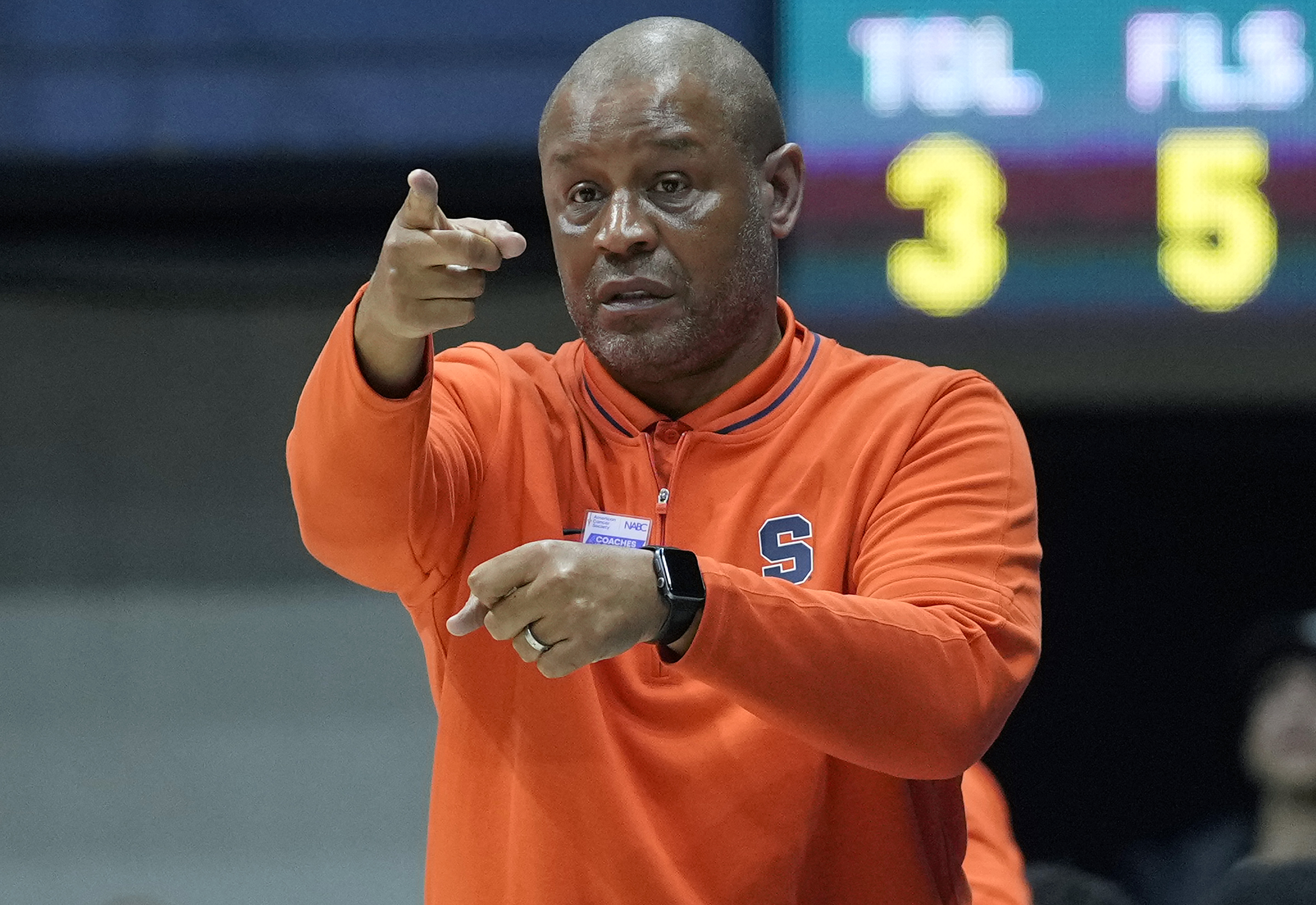
24. Oklahoma State (Previous ranking: 21)
Newcomers: Kanye Clary, 5-foot-11 junior guard, Mississippi State; Vyctorius Miller, 6-foot-5 freshman guard, LSU; Isaiah Coleman, 6-foot-5 sophomore guard, Seton Hall; Anthony Roy, 6-foot-3 senior guard, Green Bay; Parsa Fallah, 6-foot-9 junior forward, Oregon State; Jaylen Curry, 6-foot junior guard, UMass
Second-year coach Steve Lutz has gone high risk/high reward with this portal group, landing guards capable of putting up big numbers. Before a season-ending ankle injury, Roy led all of college basketball at 25.7 points per game through 11 games. Coleman (15.6 points per game) led Seton Hall in scoring, while Clary put up nearly 17 points per game two seasons ago at Penn State. He missed all but seven games this season with what Mississippi State termed a lower leg injury. The recent addition of Fallah gives Cowboys a big man who can score inside; he averaged 12.8 points and was an All-WCC performer this past season.
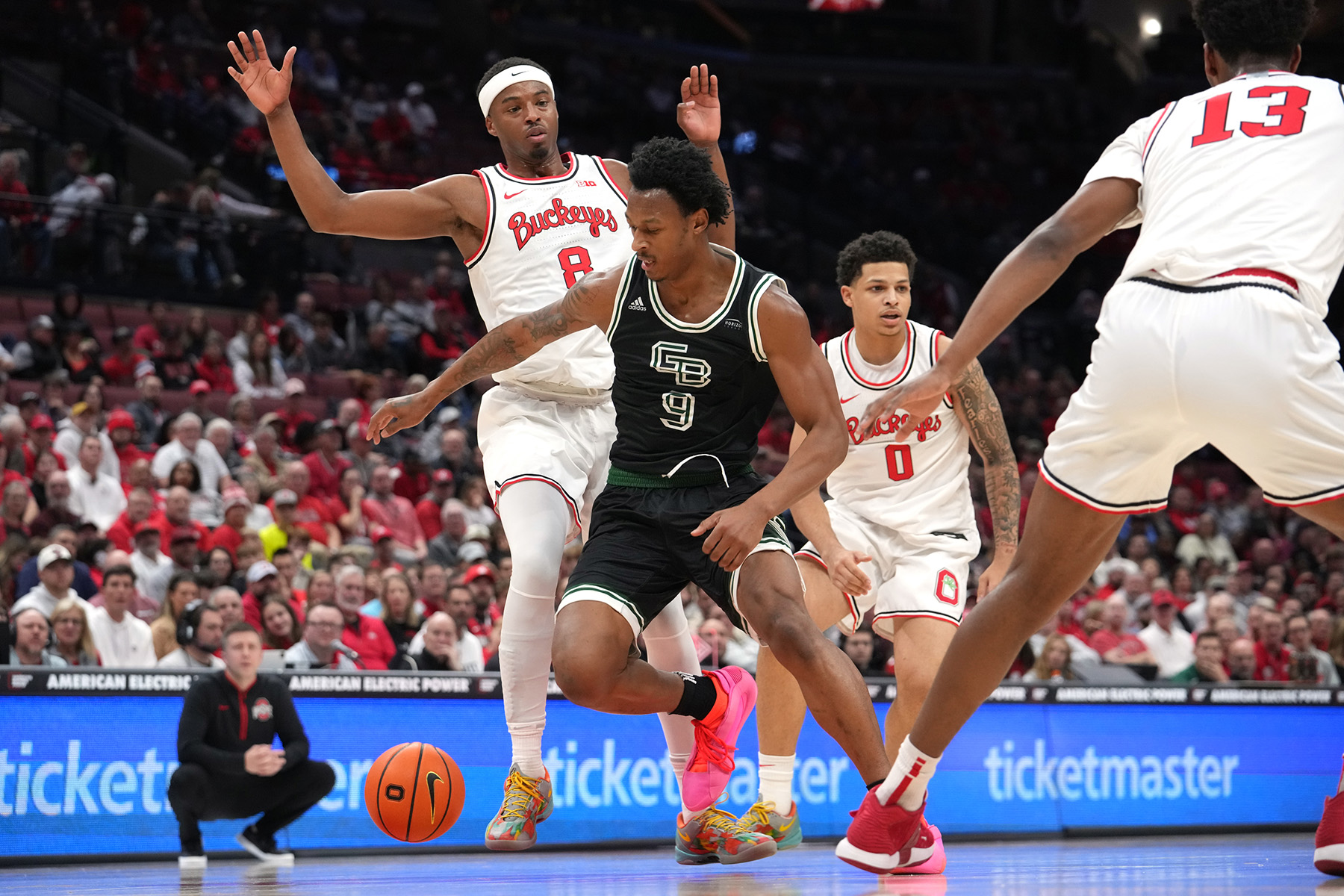
25. Miami (Previous ranking: 22)
Newcomers: Tre Donaldson, 6-foot-2 junior guard, Michigan; Tru Washington, 6-foot-4 sophomore guard, New Mexico; Malik Reneau, 6-foot-9 junior forward, Indiana; Ernest Udeh, 6-foot-11 junior center, TCU; Jordan Kee, 6-foot-3 freshman guard, Georgia
New coach Jai Lucas took over an empty roster and has done a solid job landing four capable starters. Donaldson and Washington are double-digit scorers, while Reneau is the most accomplished of the newcomers, averaging 13.3 points per game with the Hoosiers. We’ll see who Lucas adds next and whether it’s a complementary piece or a new focal point of the offense.

DROPPED OUT: Oklahoma (23), Florida State (24), Providence (25)
